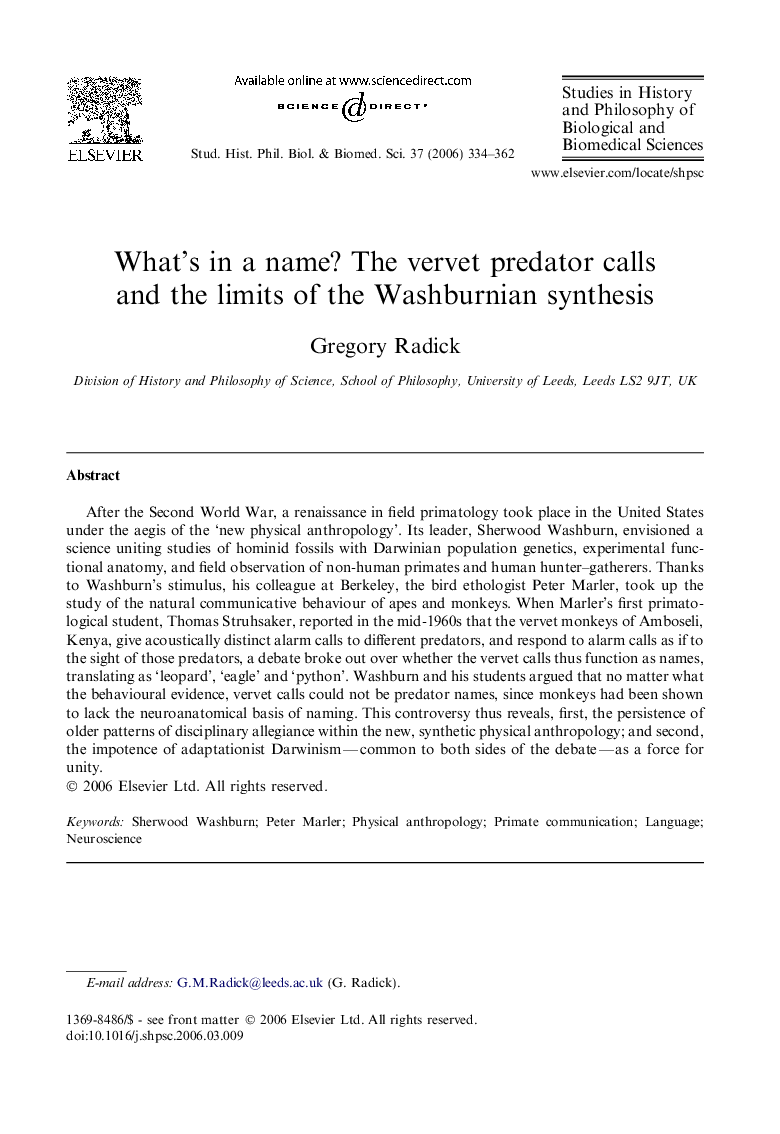| کد مقاله | کد نشریه | سال انتشار | مقاله انگلیسی | نسخه تمام متن |
|---|---|---|---|---|
| 1162006 | 1490554 | 2006 | 29 صفحه PDF | دانلود رایگان |

After the Second World War, a renaissance in field primatology took place in the United States under the aegis of the ‘new physical anthropology’. Its leader, Sherwood Washburn, envisioned a science uniting studies of hominid fossils with Darwinian population genetics, experimental functional anatomy, and field observation of non-human primates and human hunter–gatherers. Thanks to Washburn’s stimulus, his colleague at Berkeley, the bird ethologist Peter Marler, took up the study of the natural communicative behaviour of apes and monkeys. When Marler’s first primatological student, Thomas Struhsaker, reported in the mid-1960s that the vervet monkeys of Amboseli, Kenya, give acoustically distinct alarm calls to different predators, and respond to alarm calls as if to the sight of those predators, a debate broke out over whether the vervet calls thus function as names, translating as ‘leopard’, ‘eagle’ and ‘python’. Washburn and his students argued that no matter what the behavioural evidence, vervet calls could not be predator names, since monkeys had been shown to lack the neuroanatomical basis of naming. This controversy thus reveals, first, the persistence of older patterns of disciplinary allegiance within the new, synthetic physical anthropology; and second, the impotence of adaptationist Darwinism — common to both sides of the debate — as a force for unity.
Journal: Studies in History and Philosophy of Science Part C: Studies in History and Philosophy of Biological and Biomedical Sciences - Volume 37, Issue 2, June 2006, Pages 334–362